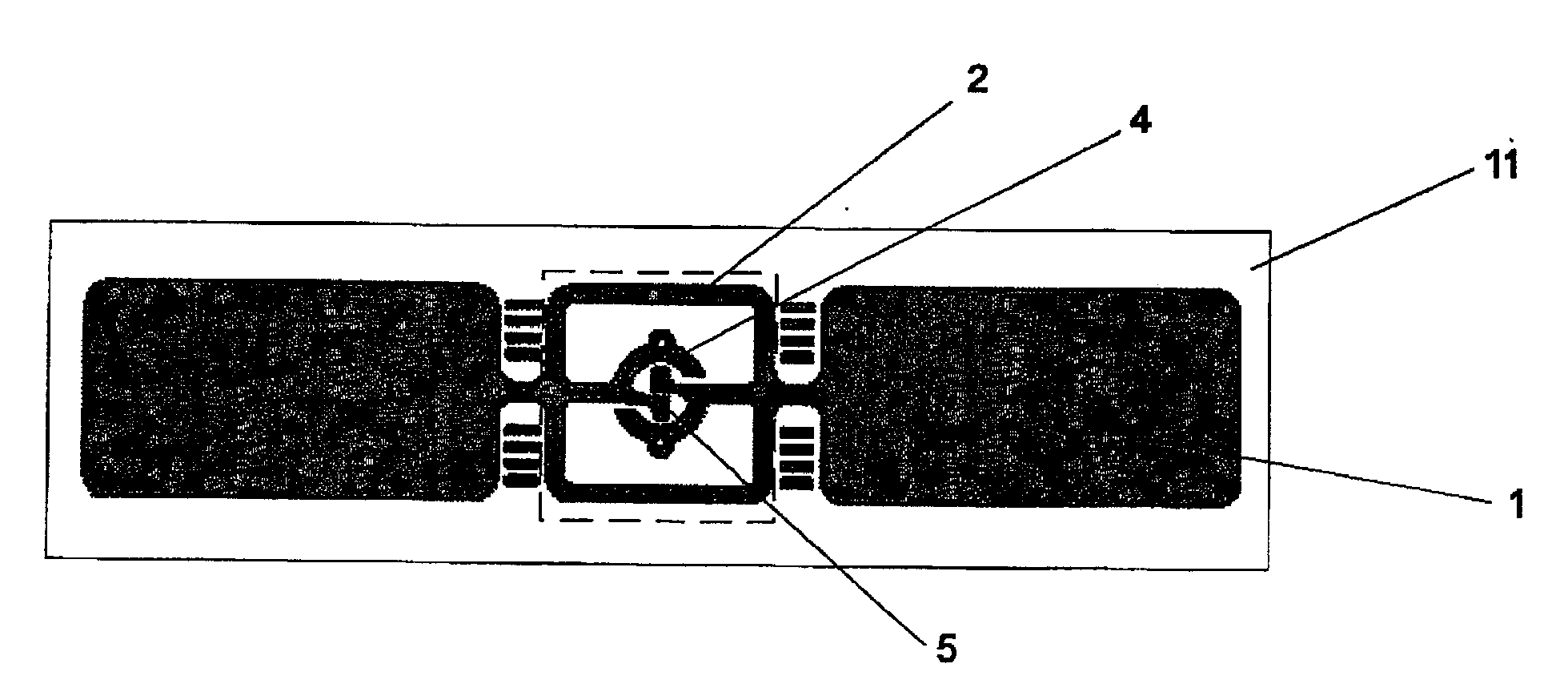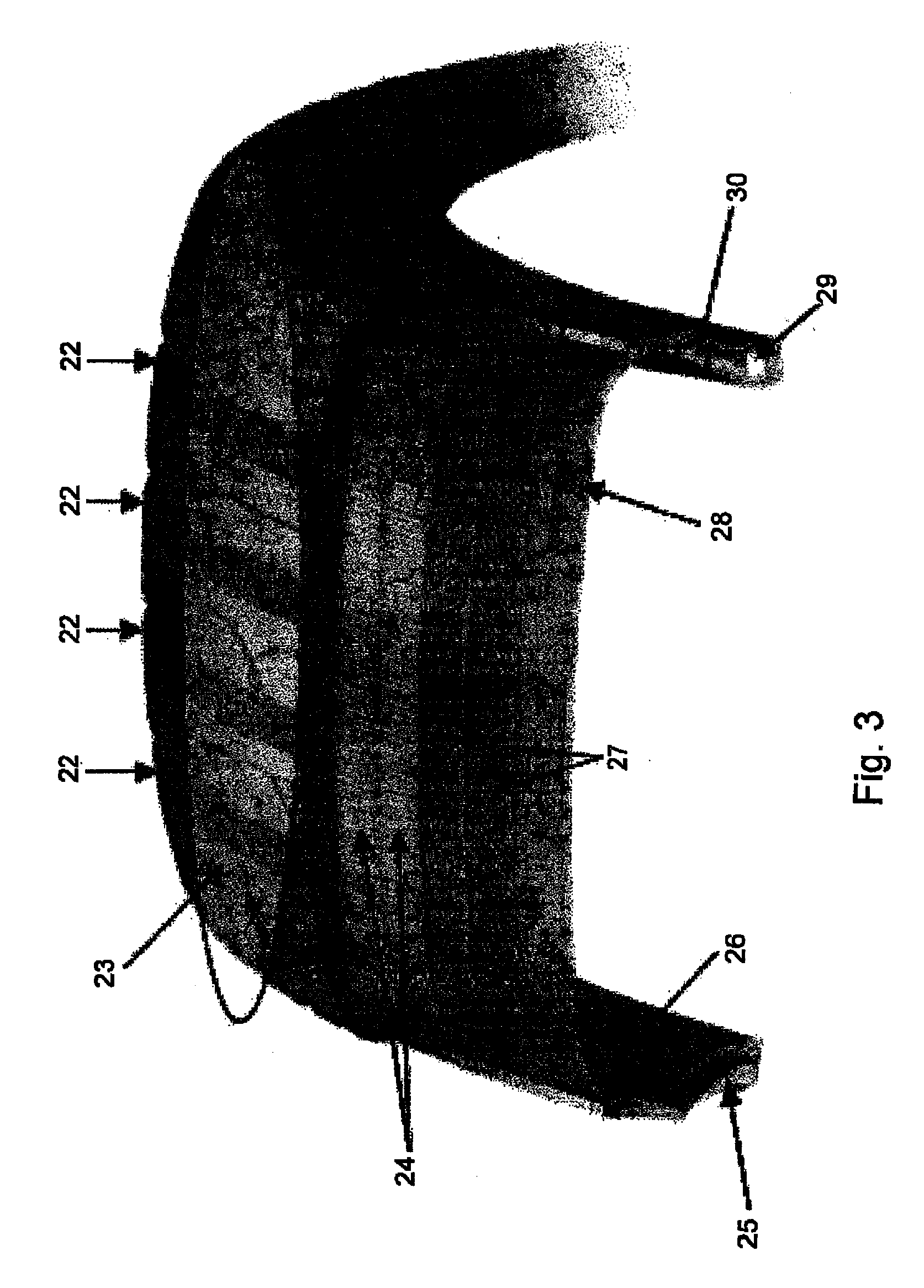RFID tag
- Summary
- Abstract
- Description
- Claims
- Application Information
AI Technical Summary
Benefits of technology
Problems solved by technology
Method used
Image
Examples
Embodiment Construction
[0030]In the following, the invention will be described by referring to figures in which
[0031]FIG. 1 shows a tag fixing on a metallic vehicle chassis,
[0032]FIG. 2 shows a tag fixing on a pipe,
[0033]FIG. 3 shows a structure of a tire,
[0034]FIG. 4 shows a structure of a tire in a cross-sectional view,
[0035]FIG. 5 shows a possible antenna structure for a high temperature RFID tag from above, especially useful as a free hanging high temperature tag,
[0036]FIG. 6 shows another possible antenna structure for a high temperature RFID tag from above, especially useful as a tire tag,
[0037]FIG. 7 shows yet another possible antenna structure for a high temperature RFID tag from above,
[0038]FIG. 8 shows yet another possible antenna structure for a high temperature RFID tag from above, especially useful as a tire tag,
[0039]FIG. 9 shows details of the tag of FIG. 6,
[0040]FIG. 10 shows a cross-sectional view of the tag at the chip,
[0041]FIG. 11a shows a cross-sectional view of a high temperature RFI...
PUM
 Login to View More
Login to View More Abstract
Description
Claims
Application Information
 Login to View More
Login to View More - Generate Ideas
- Intellectual Property
- Life Sciences
- Materials
- Tech Scout
- Unparalleled Data Quality
- Higher Quality Content
- 60% Fewer Hallucinations
Browse by: Latest US Patents, China's latest patents, Technical Efficacy Thesaurus, Application Domain, Technology Topic, Popular Technical Reports.
© 2025 PatSnap. All rights reserved.Legal|Privacy policy|Modern Slavery Act Transparency Statement|Sitemap|About US| Contact US: help@patsnap.com



